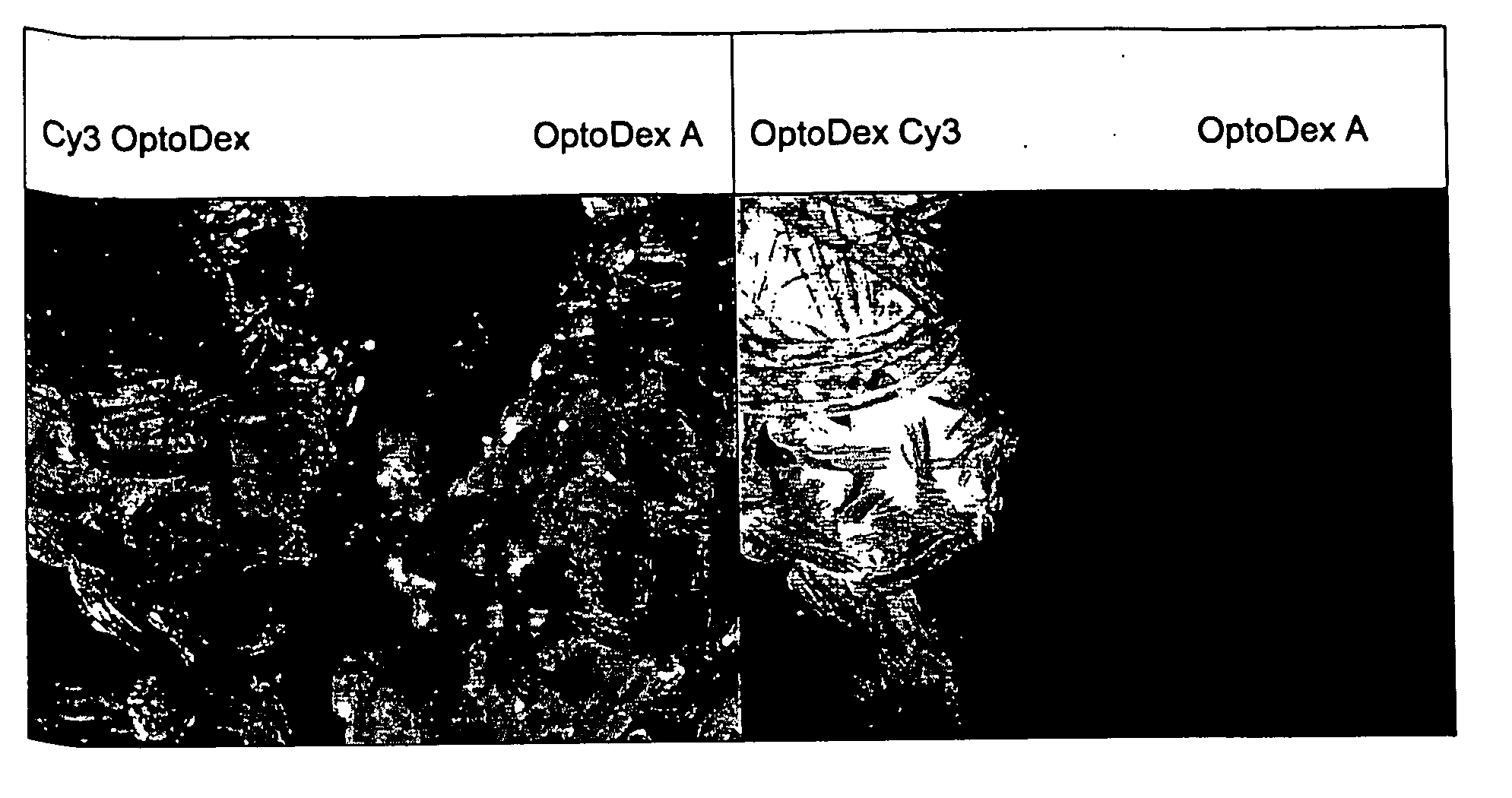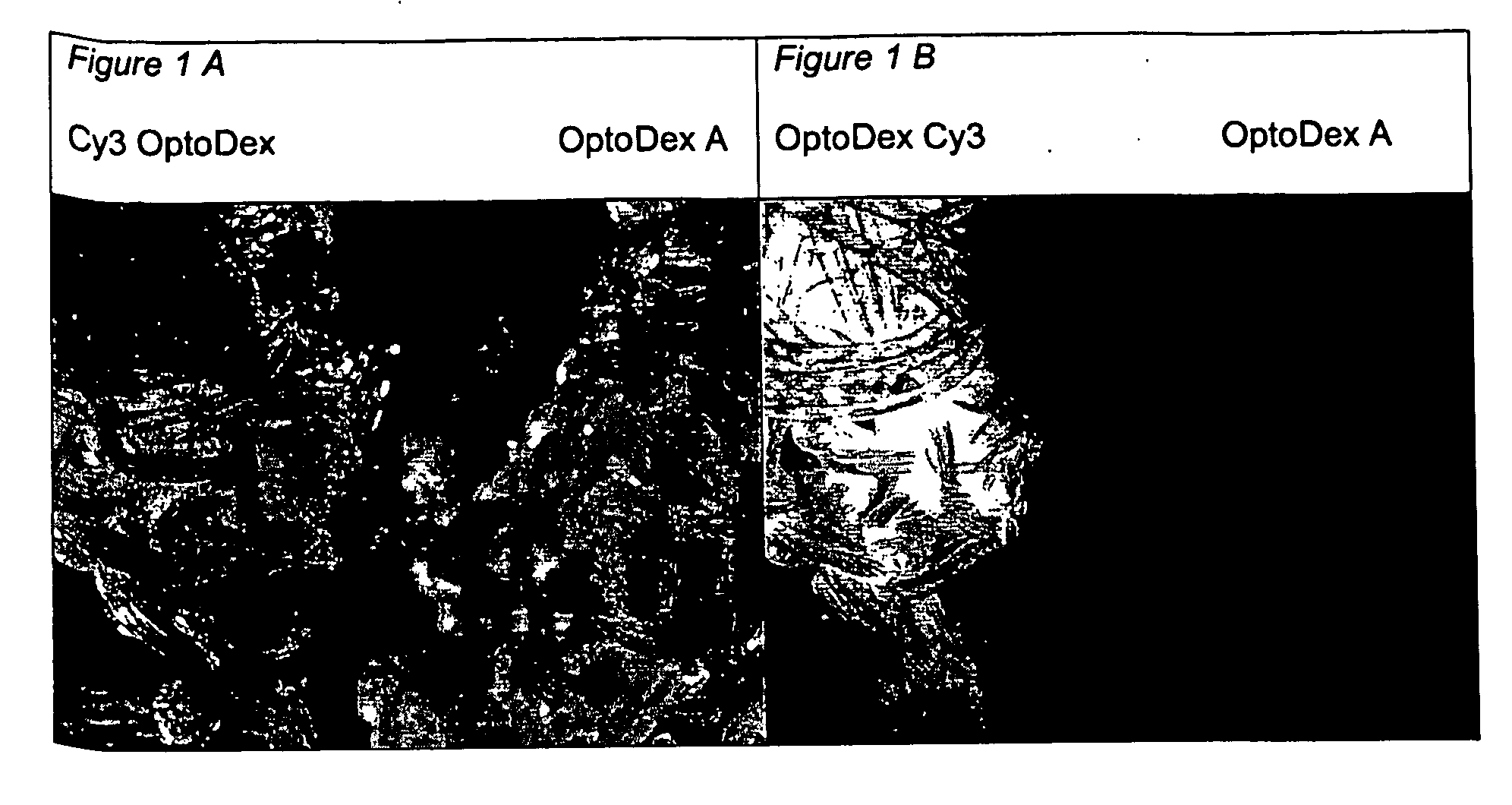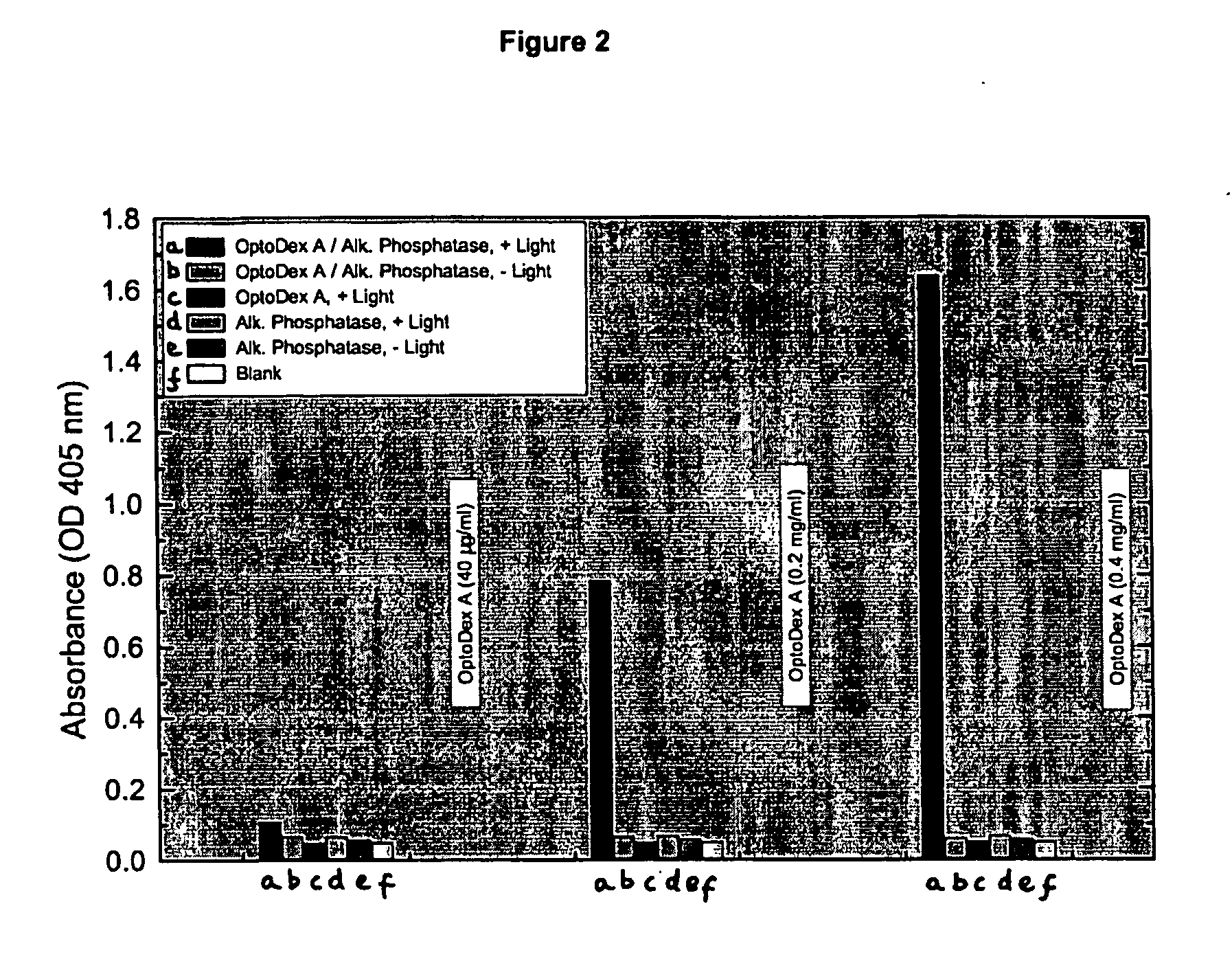Functionalization of yarn and textile products
a technology of functionalization and yarn, applied in the field of chemical and biochemical functionalization of yarn and textile products, can solve the problems of difficult to achieve the addition of new bio-based functions to textile materials, in particular textile functionalization with biologically active substances, and many natural or synthetic yarns and textile products do not have physical or chemical properties that allow modification
- Summary
- Abstract
- Description
- Claims
- Application Information
AI Technical Summary
Benefits of technology
Problems solved by technology
Method used
Image
Examples
example 1
Synthesis of Photolinker Polymers: OptoDex A, OptoDex C and Cy3-OptoDex.
[0118] OptoDex A was prepared by partial thiocarbamoylation of the amino groups of aminodextran—a 40 kDalton dextran with up to 80 mol amino functions per mol dextran as obtained for instance from Molecular Probes, with 3-(trifluoromethyl)-3-(m-isothiocyanophenyl) diazirine. OptoDex C was synthesized by derivatization of OptoDex A with glutaranhydride. Cy3-OptoDex was prepared by treatment of OptoDex A with the monofunctional N-hydroxysuccinimide ester of Cy3 cyanine dye (a product of Amersham). OptoDex A, OptoDex C and Cy3-OptoDex are thus linker polymers which are multiple substituted with both, the photoactive chemical species and amino functions (OptoDex A), carboxy functions (OptoDex C) or a fluorescent dye Cy3-OptoDex.
example 2
Textile Pre-treatment and Coating with Photolinker Polymers.
[0119] Commercial synthetic polyester yarn shows low water adsorption and wetting properties are not favourable for treatment with aqueous systems. As a consequence of the low water binding capacity, the surfaces did not sufficiently wet to achieve adsorptive binding of the photolinker polymer. Oxygen plasma treatment for 3 min (250 Watt, Oxygen pressure, 250 mτ) resulted in good wetting of polyester textile fabric. Wetting properties of functionalised polyester textile was improved upon treatment of the textile with the photolinker polymer OptoDex A, OptoDex C or Cy3-OptoDex.
[0120] In one set of experiments, coating of polyester tissue with the photolinker polymer OptoDex was carried out with non-fluorescent OptoDex A and with the fluorescent OptoDex Cy3 using polyester textile sample pads (2×2 cm) produced by Bischoff-Textil, Switzerland. After oxygen plasma treatment, tissue samples were incubated in aqueous solutions...
example 3
Photoimmobilization of Alkaline Phosphatase on Woven Polyester Textile:
[0121] a) Optodex A was dissolved with PBS buffer (1:100 diluted) at a final concentration of 0.04 mg / ml, 0.2 mg / ml and 0.4 mg / ml respectively. Tissue samples (woven polyester, 8×9 cm2) were treated with oxygen plasma and dipped in the OptoDex A solution for 1 hour at room temperature. Tissue samples were rinsed with bidistilled water, dried in vacuum for 1 h (5×10−2 mbar) and stored vacuum packed at −20° C. till used. [0122] b) Photoimmobilization of alkaline phosphatase: Alkaline phosphase was dissolved in PBS (1:100 diluted containing 10% ethanol) and applied to OptoDex A coated tissue samles (1.0 μg / 100 μd applied to 1 cm2 textile). Identically treated non OptoDex A-coated tissue samples served as controls (8 replicate for each sample). After drying for 3 h in vacuum (1 h at 20 mbar, followed by 2 h at 5×10−2 mbar), chips were irradiated for 4 min with an Oriel light source (350 nm, 11 mW / cm2). All samples ...
PUM
| Property | Measurement | Unit |
|---|---|---|
| Denaturation enthalpy | aaaaa | aaaaa |
Abstract
Description
Claims
Application Information
 Login to View More
Login to View More - R&D
- Intellectual Property
- Life Sciences
- Materials
- Tech Scout
- Unparalleled Data Quality
- Higher Quality Content
- 60% Fewer Hallucinations
Browse by: Latest US Patents, China's latest patents, Technical Efficacy Thesaurus, Application Domain, Technology Topic, Popular Technical Reports.
© 2025 PatSnap. All rights reserved.Legal|Privacy policy|Modern Slavery Act Transparency Statement|Sitemap|About US| Contact US: help@patsnap.com



